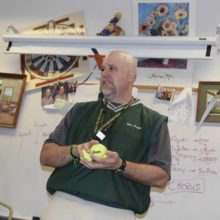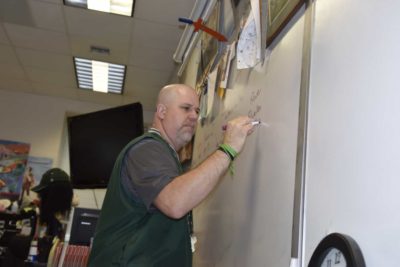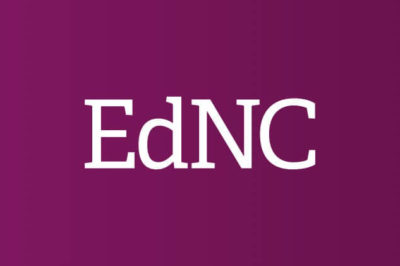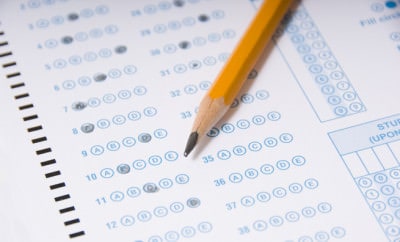There is an incredible emphasis on the STEM curriculum approach in our public schools. And I fear that because of the limiting of resources and reduction of per-pupil funding by our state government that other subject areas have and will suffer for it. We are already seeing that manifested in the class-size law that threatens specials in the K-3 grades in traditional public schools.
There is no doubt that having a unique approach to engaging students in science, technology, engineering, and mathematics is important as we still adjust to instilling 21st century skills in our students. However, without the skills derived from other fields of study such as the liberal arts, the social sciences, the fine arts, and the humanities, that sole focus on STEM will create very knowledgeable, but one-dimensional students.
Think of a physical body where all limbs are functional and useful. Yet, the right arm is much more developed and favored than the others. In exercises that require only the use of the right arm, this person does well. In exercises that require full body coordination and strength, this person is weakened.
This century requires a much more fully coordinated workforce and a more dynamic world economy. Communication, presentation, collaboration, and understanding of other cultures past and present are just as critical as the products that we produce.
Many decision makers in Raleigh believe that our country’s ability to maintain its position and even lead the world in innovation and economic development rests solely on how well our students become enmeshed with STEM curriculum and its related fields.
I disagree. Not because I teach a subject area that is not STEM, but because I believe that the teachers of STEM subjects that I work with see and value the skill sets that non-STEM teachers teach.
For a state that expends a lot of energy and money allowing for “choice” in our schools, is it not ironic that many lawmakers including our own governor seem to be favoring some of the choices above others? These same lawmakers should know that being able to take advantage of any option in life is contingent on critical thinking skills, problem solving capabilities, effective communications abilities, and an understanding of what has worked in the past. Simply put, all subject areas are vital in preparing our students to make those choices.
But with all of this emphasis on STEM, the acronym itself suggests that there is more that students need to be exposed to when it comes to creating an innovative citizenry for this new age.
Why? Because a “STEM” is only part of the larger flower or plant. And while the STEM is important, so are the roots, leaves, soil, sun, and water in creating the bloom, fruit, crop, or plant. If we are to create a vibrant citizenry, we need to make sure that we pay attention to the whole student. And that means that we need to make sure that the very students who many claim need to be immersed in STEM curriculum are also nurtured with the arts – both the liberal and the fine arts.
Think about it. Before a plant can grow it needs to have a good root system that allows it to take in nutrients from the soil and water from the ground. The more elaborate the root system is, the better chance that the plant will grow and thrive.
Much like a root system, we make sure to give our students a foundation early. Remember the three “R’s”? Two of them refer to reading and writing, which are the basis for language arts. Reading is practically the most foundational aspect for almost every other type of learning. Establishing and nurturing that root system must happen. Besides, the bigger the plant, the need for a more elaborate root system. That’s why we always need good language arts instruction. And writing (all types of writing) enhances our language abilities. It allows us to interact with the environment.
The leaves are like the social sciences and other humanities. Leaves take in the sunshine and use photosynthesis to literally feed the plant. The leaves interact with what is around the plant. Much like the leaves, the social sciences and humanities lend perspective and teach lessons about what is around us and how we can interact with those entities. History, sociology, civics, health, and other types of classes lend us a lens to see how the world works and how we can function in that world. They also teach what has worked in the past and what has worked in other climates.
There is so much evidence and research that the fine arts enhance any student’s ability to improve in all academic areas. Theater, music, visual arts, and dance help students expand themselves and develop self-esteem, confidence, creativity, and self-expression. Think of the bloom or the fruit of a plant. What makes that plant attractive or wanted? What makes the fruit of produce eye-catching? Why would we be drawn to it? The very appearance and appeal to the senses has a lot to do with just how a plant presents itself.
What many in Raleigh forget is that they control the very soil and water that is used to help plants (students) grow. By fully funding our public schools, they ensure that the soil is nutrient rich and able to help grow plants. By removing obstacles like vouchers and unregulated charter schools, they can ensure that there is enough rain falling on the plants for them to grow.
When they say we don’t need as many liberal arts, humanities, social sciences, and fine arts, they are literally saying that plants are nothing but stems. And the stem cannot survive on its own. It needs the other parts.
I truly believe that good teachers in good schools not only value the skills that other teachers help students obtain, they possess an understanding that the entire faculty and staff is one giant collaborative team. Cross-curricular cooperation should be common and chances to help reinforce concepts across subject areas show students the worth of what is being taught.
It is disheartening to see lawmakers favor a set of courses over others.
Because they are all important.




